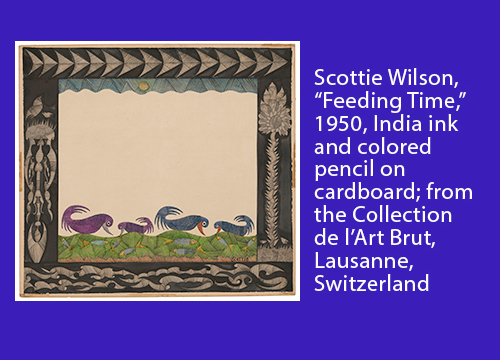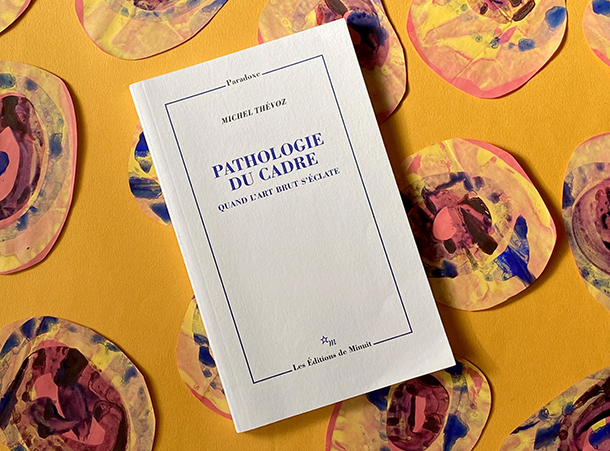
IN ONE OF HIS RECENT BOOKS AND AN EXHIBITION THAT WAS BASED ON IT, THE SWISS ART HISTORIAN AND CURATOR MICHEL THÉVOZ EXAMINED THE MEANINGS OF FRAMES AND FRAMING IN THE WORKS OF ART BRUT CREATORS
by Edward M. Gómez
The Swiss art historian, curator, and educator Michel Thévoz is one of Europe’s most original — and respected — thinkers and commentators about art and culture. Thévoz, who was born in 1936 in Lausanne, Switzerland, the elegant, lakeside city that is still his home, was a friend and close collaborator of Jean Dubuffet (1901-1985), the influential French modern artist who, in the 1940s, based on his research and collecting activities in Western Europe, first articulated the aesthetic characteristics that typify art brut (“raw art”) and also gave the phenomenon its name.

Dubuffet donated his personal holdings of the hard-to-classify creations of self-taught artists whom he had discovered living and making art on the margins of mainstream society to the new Collection de l’Art Brut, a museum that opened in Lausanne in 1976. It remains the leading institution in the world whose specialized research, exhibitions, and educational programs focus on such unique and unusual works of art. Thévoz served as the Collection de l’Art Brut’s first director, from the time of its grand opening through 2001. Later, he became a professor of art history and museology at the University of Lausanne.
to read the whole article.



